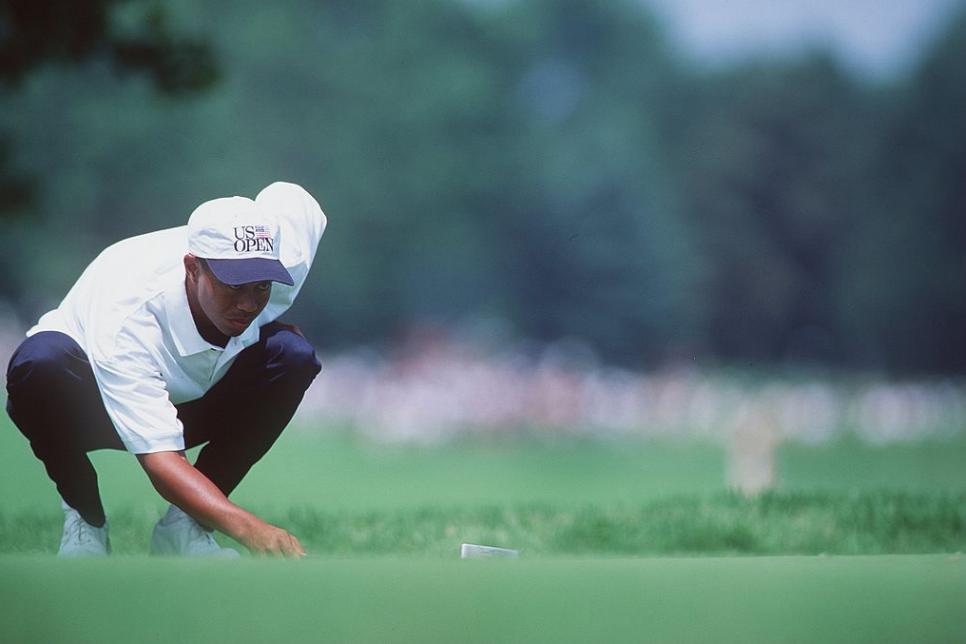Recently, I’ve found my game trapped in an annoying cycle. I ended rounds feeling like I played well, but didn’t score well. It’s something most golfers can relate to.
It wasn’t even that my rounds had one or two big blow-up holes. It’s more than if my rounds would have a few too many holes where I’d be in a good position, then sleepwalk my way to a bogey. Whas should’ve been a decent birdie look, ended with a sloppy bogey (or worse).
When I started to take a more forensic look at those holes, it almost always came down to one shot in particular.
A dumb drive out of bounds.
A rushed first putt, leading to a three-putt.
An easy chip I wouldn’t get up-and-down.
These mistakes were usually caused by a lapse of concentration either before, or during, the shot. I went through the motions without much thought or effort, and got the substandard result it deserved.
The fix for problems like this isn’t technical, as much as it is mental. I simply wasn’t focusing when I should, which led me to adopting what the Association for Applied Sports Psychology calls a “Focus Cue.”
What is a Focus Cue?
Did you watch that movie “For The Love of the Game”? It’s a baseball movie starring Kevin Costner, who plays a almost-retired pitcher Billy Chapel
At one point during his final game at Yankees Stadium, Chapel says to himself the words “Clear the Mechanism.” Suddenly the noise all around him dulls. The crowd blurs to nothing. Chapel is in the zone, and it helped him finish off his perfect game.
That’s a focus cue. A word, or short sentence, that helps you focus on whatever it is you’re about to do.
Why does a Focus Cue help?
Sports psychologist Matt Cuccaro, who consults with multiple tour players and top amateurs, explains:
“When used it can actually be a form of visualization. If you think of a cue word such as ‘commit’ or ‘smooth’ right, it drives an action that is a desired approach and creates an intention for a movement or a shot or whatever might be arising for the athlete It can also potentially serve as a settling mechanism or an arousal mechanism so someone wants to become a little more relaxed and settled.”
Should I use the same Focus Cue for different shots?
No, you don’t need to use the same cue for different shots. Some players have multiple words they use for different parts of their game. Rory McIlroy at the 2014 Open Championship, for instance, used the cue “process” from tee to green, to remind him to stick to his routine. Then he used the word “spot” on the greens, to help him aim.
J.D. Cuban
Should I use the Focus Cue every time?
No, you also don’t need to use your cue every time. You can use it (or not use it, based on the situation.
“Maybe they use a word if they want to get pumped up,” Cuccaro says. “I don’t necessarily ask my athletes to lean on one specific trigger word because I truly want them to become more dynamic athletes in each situation.”
How do I put a Focus Cue into play?
The cue I’ve settled on is “engage with the shot”—a literal reminder to take interest in the details of the shot I’m about to hit. I use it from tee-to-green, but it’s especially useful on chips around the green, where evaluating the lie becomes important.
That’s what works for me, it may not for to. The first step is understanding what is causing your sloppy mistakes, and what you need in those moments.
After that, the AASP says…
- Take a deep breath through your nose for four seconds
- Hold that breath for “one to two seconds”
- Exhale through your mouth for four seconds
- Say your cue as you exhale
- Proceed with your shot
Give it a try, and let me know if it works as well for you as it is for me.
This article was originally published on golfdigest.com

